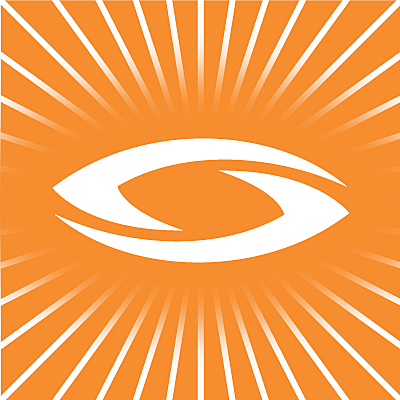COVID-19 has forced government-mandated travel bans, shutdowns and shelter in place orders around the world, but it hasn’t stopped indispensable industries and services from continuing their work. Without healthcare, infrastructure, manufacturing, and essential retail, our global economies and societies would collapse. We rely not only on the people who run these businesses and services, but also on the millions of field service workers that keep mission-critical utilities and equipment in operation.
Collectively, SightCall customers receive hundreds of thousands of service incidents per month. On average, we help our customers resolve 55% of their SightCall work orders without the need for an onsite visit. Before 2020, I might have told you that the primary benefits of digitally transforming with live video were to provide a better service to the customer, improve the company’s bottom line and empower employees. Today I would tell you that the stakes to convert onsite visits to visual support calls are critical to public health.
There’s no doubt that over the past few months you’ve heard the term “flatten the curve,” but what does it mean? Flatten the curve is a term coined by Dr. Howard Markel, a University of Michigan medical historian. When studying past pandemics, Dr. Markel and his colleagues found that throughout history, cities that took drastic measures to curb contact could reduce the spike (curve) in infections and stretch them out (flatten) over a longer period of time.
By this logic, we have to assume that every truck roll, doctor appointment, or in-person customer interaction that can be converted to a phone call, online chat or visual support session will reduce the possibility of spreading coronavirus and help to flatten the curve. For early adopters of digital transformation, this challenge has been surmountable. For service organizations that have been slow to change, COVID-19 has presented a huge challenge that must be addressed now. All service organizations must find a way to maintain field service operations while mitigating the risk associated with contact.
Visual Support Reduces Technicians in the Field
The right visual support tool can reduce trips to the field by half. When a technician can see the problem before going onsite, they are more likely to: identify if the issue is simple user error; determine if the issue can be fixed through remote guidance; determine exactly what parts will be needed to resolve the issue; or decide if the issue requires a product replacement rather than fix. See how Koenig & Bauer uses SightCall to improve fix rates and help their customers resolve complex issues remotely.
Visual Support Reduces the Need for Person-to-Person Contact
Some service requests do not require a trained expert to be deployed to the field. There are tasks that can be guided and performed by a person onsite, even if that person is not an employee of your company. Cable providers can rely on customers to help them see if a modem needs a reset or a total replacement. Insurers are able to expedite their claims process from weeks to days by handling claims remotely with customers. Retailers can walk customers through user errors reducing the need for product returns or onsite visits. SightCall empowers your support team to see the issue and provide a diagnosis in real-time.
Visual Support Improves Uptime for Essential Equipment
Due to travel bans and quarantine, it is not always possible to send the most qualified technician out in the field. Visual assistance empowers a remote expert to guide an onsite technician through a complex repair process. SightCall provides a robust suite of tools in a collaborative digital environment that allows two technicians to interact as if they were in the same location. Features like Augmented Reality (AR) annotations, live pointer and document share make it easy for technicians to work in harmony and fix problems as a team. See how GE Healthcare uses SightCall to keep mission-critical medical devices online with remote visual assistance.
Visual Support Can Ensure Business Continuity
In February 2020 when the coronavirus outbreak hit Italy, the Italian government set up red zones to establish travel to and from the outbreak epicenters. This prevented A&A Italia, a loss adjusting and third-party claims administrator, from sending insurance adjusters to support customers with claims for an indefinite period of time. A&A was able to use SightCall to provide continued service to their customers and the insured. A&A agents safely processed customer claims from home or office with no need to go onsite. The insured were pleased that the claims process could be handled remotely, respecting their safety, without an agent having to visit their home. With visual assistance, A&A was able to continue business operations and take care of their customers and employees.
"Since 2017, A&A Italia has used SightCall to serve customers in 40% of insurance claims. Once Coronavirus became a major public health concern, we knew that SightCall was the only tool that would allow adjusters to continue their work safely from home. Due to the crisis our customers are reluctant, and sometimes unable, to allow adjusters into their home. Visual Support enabled us to maintain close contact with the insured while respecting government restrictions. Being the first adopter of visual claims in Italy made it easier for us to adjust in the wake of this epidemic."
- Elisabetta Pinciroli
Managing Director, A&A Italia
As of March 25, 2020, there are 458,000 cases of confirmed Coronavirus reported globally, and that number continues to grow. It is our prerogative to deploy digital technologies, in addition to other health precautions and safety measures, that allow us to continue business operations while protecting our employees, customers and global community.
Coronavirus is spreading rapidly due to our connected world, it is also our connected world that can help to stop it. Together we can flatten the curve and protect our essential workers and healthcare providers until there is a treatment.
Contact us for more information on SightCall visual assistance.





